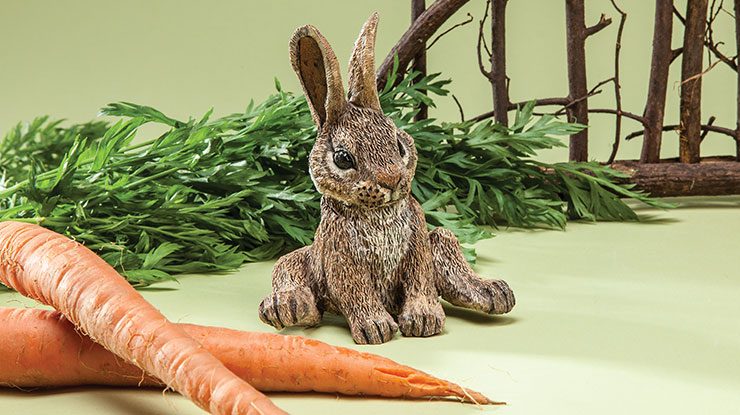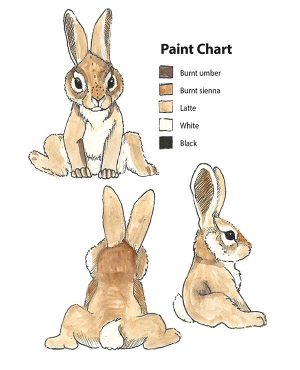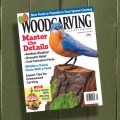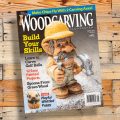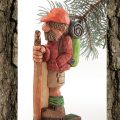Turn this woodland favorite into an adorable spring decoration
By Desiree Hajny
Thanks to popular media, we can’t help associating our long-eared friends with spring. I’ve had several batches of young bunnies in my backyard and always enjoy watching each one’s development from wide-eyed little creature to majestic adult. For this project, make sure not to carve off too much wood too quickly; you’ll need that volume later for the ears and tail, and to create a supple fur texture around the cheeks and ruff. After you finish this project, build yourself a custom paint rack to keep all your paints organized in your workspace!
Getting StartedDraw the front-view pattern onto the blank. Cut around the perimeter with a band saw. Then, remove the excess wood with a 3/8″ (10mm) #6 gouge. Trace the side-view pattern onto the blank and use the same gouge to remove the excess. |
Carving and FinishingRefer to the patterns often as you carve the piece. Be careful not to cut off the top spool for the carving blank; you’ll need this for the ears. I use a detail knife and a small V-tool to define the eye and mouth areas and a 1/8″ (3mm) #11 veiner to create texture inside the ears and on the tail, cheeks, and ruff. Mark the whisker dots in using a woodburner with a writing nib. If you plan to use the writing and skew nibs to burn the fur texture in just a few places rather than all over the body, brush on a pre-stain conditioner, such as Minwax, before you paint to prevent blotchiness. Add a clear gloss acrylic finish to the eyes to make them shine. |
|
Materials• Basswood, 2 1/2″ (6.4cm) thick: 3 1/4″ x 3 3/4″ (8.3cm x 9.5cm) • Pre-stain conditioner, such as Minwax • Acrylic paint: black, burnt sienna, burnt umber, latte, white • Tung oil: low gloss • Finish: clear gloss acrylic • Sandpaper (optional) |
Tools• #6 gouge: 3/8″ (10mm) • #11 veiner: 1/8″ (3mm) • V-tool: small • Detail knife • Woodburner, variable temperature, with nibs: skew, writing (optional) • Paintbrushes: soft, round, detail, short-bristled |
| About the Author |
|
Desiree Hajny of Blue Hill, Neb., has been a full-time sculptor of wood since 1985. Prior to that, she was a high school art instructor for six years. She has authored seven books and contributed to eight others. Desiree has also been a contributing author to periodicals in the United States and Europe. She was the third recipient of Woodcarving Illustrated’s “Woodcarver of the Year” award. Find more of Desiree’s work at hajny.fineartworld.com. |
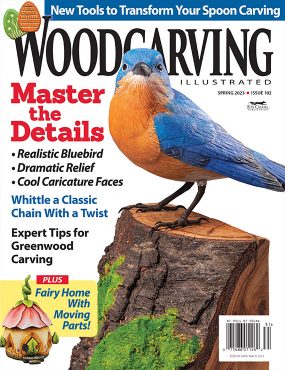 |
Get the Spring 2023 Issue Purchase the IssueFor more articles like this, subscribe to Woodcarving Illustrated magazine. Magazine SubscriptionPlus! Get digital mini magazines in your e-mail between printed issues.
|


